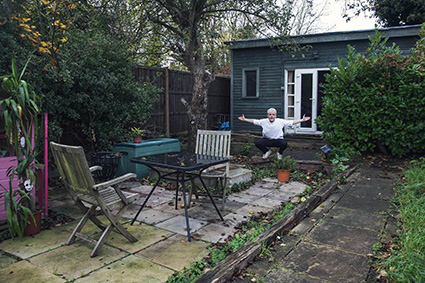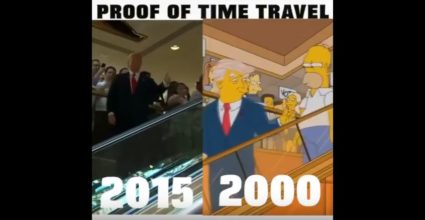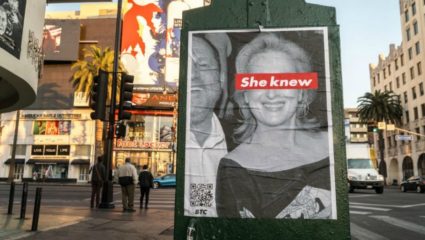In a far-ranging, frightening, and fascinating interview, Buzzfeed News catches up with engineer and tech prognosticator Aviv Ovadya, who anticipated the current scourge of “fake news” and says we haven’t seen anything yet.
“He Predicted The 2016 Fake News Crisis. Now He’s Worried About An Information Apocalypse.”
By Charlie Warzel
Buzzfeed
February 11, 2018
 In mid-2016, Aviv Ovadya realized there was something fundamentally wrong with the internet — so wrong that he abandoned his work and sounded an alarm. A few weeks before the 2016 election, he presented his concerns to technologists in San Francisco’s Bay Area and warned of an impending crisis of misinformation in a presentation he titled “Infocalypse”
In mid-2016, Aviv Ovadya realized there was something fundamentally wrong with the internet — so wrong that he abandoned his work and sounded an alarm. A few weeks before the 2016 election, he presented his concerns to technologists in San Francisco’s Bay Area and warned of an impending crisis of misinformation in a presentation he titled “Infocalypse”
The web and the information ecosystem that had developed around it was wildly unhealthy, Ovadya argued. The incentives that governed its biggest platforms were calibrated to reward information that was often misleading and polarizing, or both. Platforms like Facebook, Twitter, and Google prioritized clicks, shares, ads, and money over quality of information, and Ovadya couldn’t shake the feeling that it was all building toward something bad — a kind of critical threshold of addictive and toxic misinformation. The presentation was largely ignored by employees from the Big Tech platforms — including a few from Facebook who would later go on to drive the company’s NewsFeed integrity effort.
“At the time, it felt like we were in a car careening out of control and it wasn’t just that everyone was saying, “we’ll be fine’ — it’s that they didn’t even see the car,” he said.
Ovadya saw early what many — including lawmakers, journalists, and Big Tech CEOs — wouldn’t grasp until months later: Our platformed and algorithmically optimized world is vulnerable — to propaganda, to misinformation, to dark targeted advertising from foreign governments — so much so that it threatens to undermine a cornerstone of human discourse: the credibility of fact.
But it’s what he sees coming next that will really scare the shit out of you. Read more.

 It was a unique restaurant in London and certainly the hardest to get into. And it beat out thousands of upscale restaurants in the city to earn the top ranking on the popular review site TripAdvisor for a time, drawing a flood of interest.
It was a unique restaurant in London and certainly the hardest to get into. And it beat out thousands of upscale restaurants in the city to earn the top ranking on the popular review site TripAdvisor for a time, drawing a flood of interest.
 In a booth on the Westside of Los Angeles sit a trio of conservative provocateurs plotting their next “street art” prank on a liberal celebrity destined to be thrust into the limelight for reasons beyond the person’s control. The restaurant has become a watering hole for conservatives who work in Hollywood and don”™t usually share their political opinions with their liberal colleagues for fear of retribution.
In a booth on the Westside of Los Angeles sit a trio of conservative provocateurs plotting their next “street art” prank on a liberal celebrity destined to be thrust into the limelight for reasons beyond the person’s control. The restaurant has become a watering hole for conservatives who work in Hollywood and don”™t usually share their political opinions with their liberal colleagues for fear of retribution. You’ve seen the video. Everyone on the internet has. A man sits in a cubicle and pounds his keyboard in frustration. A few seconds later, the Angry Man picks up the keyboard and swings it like a baseball bat at his screen””it”™s an old PC from the ’90s, with a big CRT monitor””whacking it off the desk. A frightened coworker”™s head pops up over the cubicle wall, just in time to watch the Angry Man get up and kick the monitor across the floor. Cut to black.
You’ve seen the video. Everyone on the internet has. A man sits in a cubicle and pounds his keyboard in frustration. A few seconds later, the Angry Man picks up the keyboard and swings it like a baseball bat at his screen””it”™s an old PC from the ’90s, with a big CRT monitor””whacking it off the desk. A frightened coworker”™s head pops up over the cubicle wall, just in time to watch the Angry Man get up and kick the monitor across the floor. Cut to black.